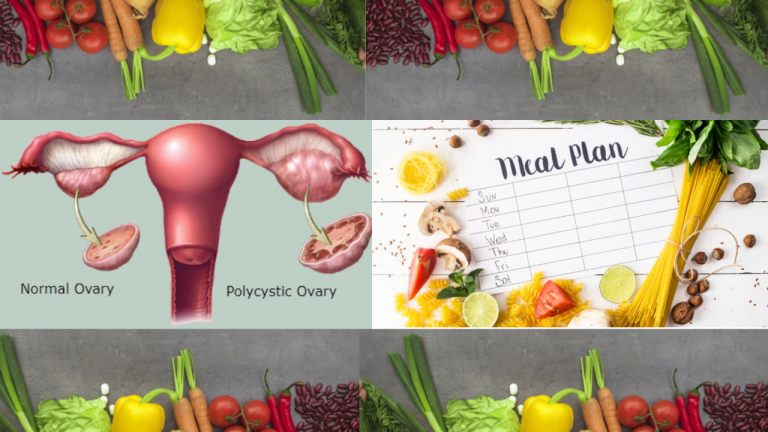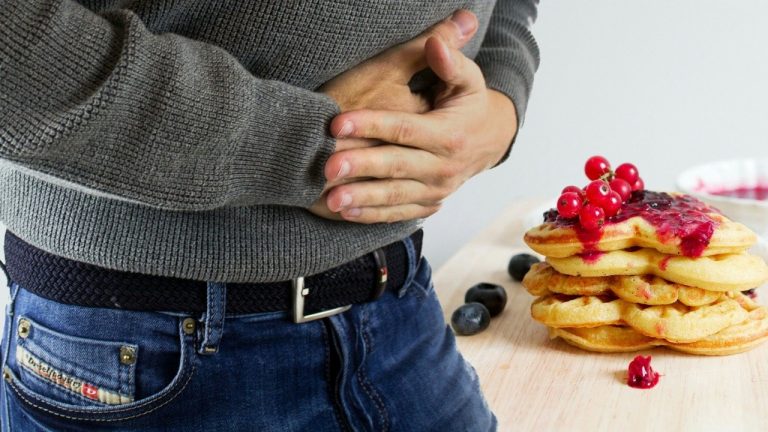DIET PLANNING FOR HTN AND CVD

Diet plays a crucial role in managing hypertension (HTN) and cardiovascular disease (CVD). Here are some general guidelines for diet planning to help manage these conditions:
- Focus on a heart-healthy diet: Follow a diet that emphasizes whole, unprocessed foods and limits processed foods, saturated fats, trans fats, and added sugars. The Dietary Approaches to Stop Hypertension (DASH) diet and the Mediterranean diet are both recommended for individuals with HTN and CVD.
- Consume fruits and vegetables: Include a variety of fruits and vegetables in your diet, aiming for at least five servings per day. These are rich in fiber, antioxidants, and essential vitamins and minerals that support heart health and help lower blood pressure.
- Choose whole grains: Opt for whole grains such as brown rice, whole wheat bread, oats, quinoa, and whole wheat pasta. Whole grains provide more fiber, vitamins, and minerals compared to refined grains.
- Include lean protein sources: Incorporate lean sources of protein such as skinless poultry, fish, legumes, tofu, and low-fat dairy products. Limit red meat, processed meats, and high-fat dairy products, which can be detrimental to heart health.
- Reduce sodium intake: Limit the consumption of high-sodium foods such as processed and packaged foods, fast food, and salty snacks. Aim to consume no more than 2,300 milligrams (mg) of sodium per day or even less if advised by your healthcare professional.
- Limit added sugars: Minimize the intake of foods and beverages high in added sugars, such as sugary drinks, desserts, and processed snacks. Instead, choose naturally sweetened options like fresh fruits.
- Include heart-healthy fats: Consume sources of healthy fats, such as avocados, nuts, seeds, and fatty fish like salmon or mackerel. These provide omega-3 fatty acids, which have been shown to support heart health.
- Monitor portion sizes: Pay attention to portion sizes to avoid overeating. Use smaller plates and bowls, and be mindful of your hunger and fullness cues.
- Reduce alcohol consumption: Limit alcohol intake to moderate levels or as advised by your healthcare professional. For most individuals, this means up to one drink per day for women and up to two drinks per day for men.
- Stay hydrated: Drink plenty of water throughout the day to stay hydrated and support overall health.
It’s important to note that individual dietary needs may vary. It’s best to consult with a registered dietitian or healthcare professional for personalized dietary recommendations based on your specific health conditions, medications, and lifestyle factors.

DIET PLANNING
• Low calorie, low-fat low sodium diet with normal protein intake is prescribed
• If the patient is obese calories should be reduced to maintain IBW
• Adequate protein is given but during severe HTN protein is restricted because protein-rich foods are rich in sodium as well
• For a normal-weight patient 15% of calories are supplied from fat and for an obese patient 10% of calories are taken up from fat sources
• MUFA-rich diet helps to control BP
• Minerals and electrolytes are very important
• NA should be restricted
• Table salt should be avoided and healthy salt alternatives should be used like rock salt, black salt, pink salt, and sendha namak
• Potassium-rich foods should be taken to increase the Na: K ratio
• Calcium should be taken 800-1200 mg which reduces BP
• Magnesium should be taken as it is a cardio-protective mineral. It helps to retain the muscle integrity of cardiac muscles
Foods To Be Avoided
• Table salt
• Pickles
• Canned foods
• Potato chips
• Ketchup, sauces
• Jams, jellies
• Cheese, salted butter
• Frozen preserved foods
• Shellfish, dry fish
• Baking powder, baking soda, Ajinomoto
• Animal or hydrogenated fats
• Radish, carrots, beetroot, spinach
Foods To be Taken
• LoNa
• Coriander leaves
• Sweet lime (Mausambi), pomegranate
• Nuts and oilseeds – walnuts
• Cereals
• Pulses
• Soups homemade with vegetables
• Cold-pressed or wood-pressed oils
• Complex crabs
• Good quality proteins
• Mufa and puff sources
LoNa Calculations
Total Na in the diet= 2400 mg
Dietary Na= 500 mg (approx)
Therefore, 2400-500= 2100 mg Na
1050 mg LoNa 1050 mg NaCl
Therefore, 100 gm LoNa gives = 20000 mg Na
So how many grams of LoNa gives 1050 mg Na
= 5.25 gm LoNa
Also, 5.25 gm LoNa gives 840 mg of potassium
100 gm common salt = 38400 mg Na
Therefore, 1050 mg of Na will be given by 2.73 gm of common salt
PLANNING OF DIET
NORMAL RDA
• Energy –1800 kcal
• Protein –50 gm
• Fat-20-49 gm
• Fiber –20 -30 gm
• Calcium –1000 mg
• Iron –28 mg
• Magnesium –500 mg
• Sodium –2400 mg
• Potassium –3600 mg
MODIFIED RDA
• Energy –1300 kcal
• Protein –50 gm
• Fat-30 gm
• Fiber –20 -30 gm
• Calcium –800-1200 mg
• Iron –28 mg
• Magnesium –500 mg
• Sodium –2000 mg
• Potassium –> 3600 mg



SAMPLE DIET PLAN
EARLY MORNING
Lemon water
Or wheat grass powder in warm water 200 ml
Or tulsi water
After 15 minutes
Or Pre work out
5 almonds + 2 walnuts
banana/orange
BREAKFAST
2 besan cheela/ suji cheela or oats cheela
Or oats nuts smoothie in curd or yogurt
LUNCH
Salad with roasted cumin powder and lemon juice
2 multi-grain chapatti
1 bowl vegetable
1 bowl dal
EVENING SNACK
Green tea and a fruit
Bowl roasted chana
DINNER
Salad or soup bowl
Rice dal
Veg pulao
Chapatti with vegetable
Bedtime
Cinnamon water/ warm water/ lemon water
CVD-Points to remember while planning diet
• Patient should maintain slightly low to normal weight
• Diet should be rich in fiber
• 5 servings of fruits and vegetables should be included in the diet not only to meet the requirements but also to provide antioxidants and fiber
• Heavy meals should be avoided
• Small and frequent meals are preferred
• Use of cold-pressed, wood-pressed, olive oil, and MUFA-rich oil is preferred
• Alcohol intake should be limited
• Sodium should be restricted
• Excess caffeine in the diet increases the heart rate, so tea coffee should be taken in moderation
• Foods with hypo cholesterolemia effect should be taken like garlic, onion, fenugreek, etc
• Avoid trans fats and SFA
• Avoid too high sources of energy in the diet
Foods to be taken
• Skim milk
• Raw salads, green leafy vegetables, whole grains
• Fish
• Almonds
• Soybean
• Fenugreek
• Onion, garlic, turmeric
• Oats
• Red wine
• Palm oil. Fish oil, olive oil
Foods to be avoided
• Packaged processed foods
• High-sodium foods
• Sugary foods
• Whole milk
• Chocolates, cakes, pastries
• Fried foods carbohydrate beverages
• Egg yolk
• Coconut
• Meat pork
PLANNING OF DIET
NORMAL RDA
• Energy –2000 kcal
• Protein –60 gm
• Fat-20-49 gm
• Fiber –20 -30 gm
• Calcium –1000 mg
• Iron –28 mg
• Magnesium –500 mg
• Sodium –2400 mg
• Potassium –3600 mg
MODIFIED RDA
• Energy –1500 kcal 25kcal/kg body weight
• Protein –60 gm
• Fat-30 gm
• Fiber –20 -30 gm
• Calcium –800-1200 mg
• Iron –28 mg
• Magnesium –500 mg
• Sodium –2000 mg
• Potassium –> 3600 mg


SAMPLE DIET PLAN
EARLY MORNING
Lemon water
Or wheat grass powder in warm water 200 ml
Or moringa water
After 15 minutes
Or Pre work out
5 almonds + 2 walnuts
banana/orange
BREAKFAST
Veg poha with peanuts and kadhi patta
And a fruit ( after some time )
Mid-morning
Seasonal fruit with a tsp of seeds
LUNCH
Salad with roasted cumin powder and lemon juice
Fish 40 grams
Chapatti –2
EVENING SNACK
Green tea and a fruit
Veg roll
Buttermilk with roasted cumin powder
DINNER
Salad or soup bowl
Dal pakwaan
Chutney
Cucumber raita
Bedtime
Cinnamon water/ warm water/ lemon water
Do’s And Don’ts For Patients
• Avoid long gaps between the meals
• Focus on smaller portions of the meals
• Include salads and 2 fruits in a day to make sure we have enough fiber in the diet to avoid constipation which usually happens during weight loss
• Mindful eating is the key to losing weight
• Deep breathing is the secret to weight loss and detoxification-do 20 cycles a day
On The Days Of Going Out For Dinner
• Avoid carbonated drinks and sugary drinks
• Have loads of salads, roasted peanuts, grilled, tandoori paneer/ chaap
• Drink lemon water before sleep and the next day 3 times a day
Follow GPRS rule
G= grilled foods like grilled paneer
P= pouched paneer
R= roasted kababs, veggies, cutlets
S= stir fry Vegas, steamed foods, soups, salads


Low Sodium Foods
Vegetables and Fruits
• Buy plenty of vegetables and fruits, like:
• Any fresh fruits, like apples, oranges, or bananas
• Any fresh vegetables, like spinach, carrots, or broccoli
• Frozen vegetables without added butter or sauce
• Canned vegetables that are low in sodium or have no salt added —you can rinse them off to remove some of the sodium
• Low-sodium vegetable juice
Whole Grains
• Compare labels to find products with less sodium. Look for foods with a 5% Daily Value (DV) or less for sodium. A DV of 20% or more is high.
• Here are some good options to try:
• Whole grains like brown or wild rice, quinoa, or barley
• Whole-wheat or whole-grain pasta and couscous —just don’t add salt to the water when you cook it
• Whole-grain hot or cold breakfast cereals with no added sugars, like oatmeal or shredded wheat
• Unsalted popcorn or low-sodium chips and pretzels
• Whole-grain bread, bagels, English muffins, tortillas, and crackers
Low sodium foods
Proteins
• Choose fresh or frozen seafood, poultry, and meats instead of processed options. Some meat, poultry, and seafood have added sodium. If the package has a Nutrition Facts label, look for 5% DV or less.
Choose options like:
• Fresh or frozen fish or shellfish
• Chicken or turkey breast without skin or marinade
• Lean cuts of beef or pork
• Unsalted nuts and seeds
• Dried beans, peas, and lentils —like black beans and garbanzo beans (chickpeas)
Dairy
• Choose fat-free or low-fat dairy products, lactose-free dairy products, or fortified soy alternatives like:
• Fat-free or low-fat (1%) milk
• Fat-free or low-fat plain yogurt
• Low-sodium or reduced-sodium cheese —be sure to check the label since cheese can be high in sodium
• Soy milk or soy yogurt with added calcium, vitamin A, and vitamin D
Low sodium foods
Dressings, Oils, and Condiments
• When you cook, use ingredients that are low in sodium or have no sodium at all —for example:
• Unsalted margarine and spreads (soft, tub, or liquid) with less saturated fat than butter
• Vegetable oils (canola, corn, olive, peanut, safflower, soybean, or sunflower)
• Low-sodium salad dressing —or oil and vinegar
• Low-sodium or “no salt added” ketchup
• Low-sodium salsa or Picante sauce
Seasonings
• Try these seasonings instead of salt to flavor your food:
• Herbs, spices, or salt-free seasoning blends
• Chopped vegetables —like garlic, onions, and peppers
• Lemon and lime juice
• Ginger








